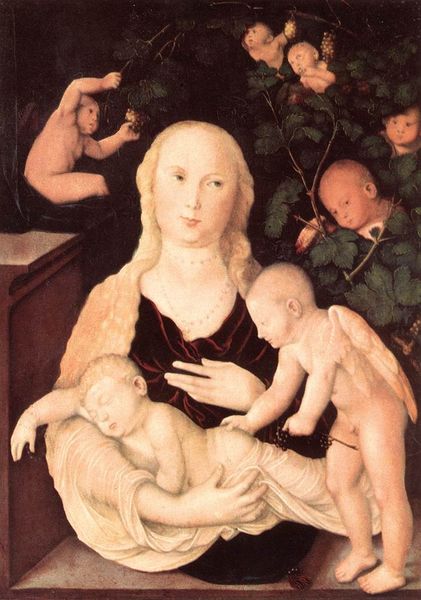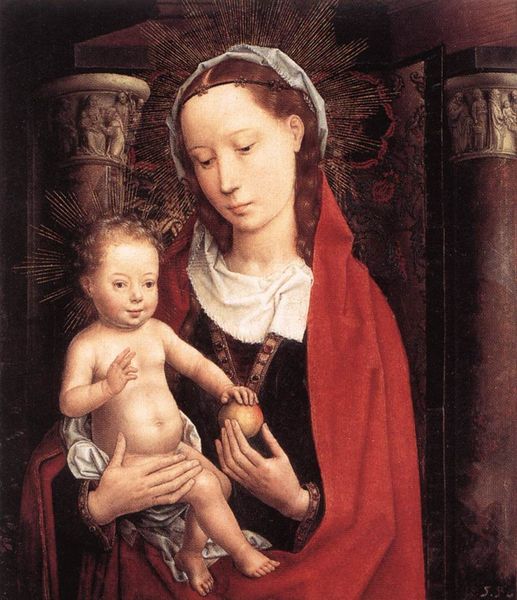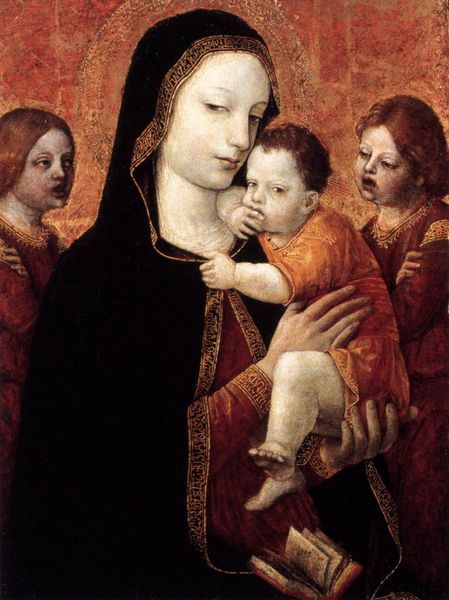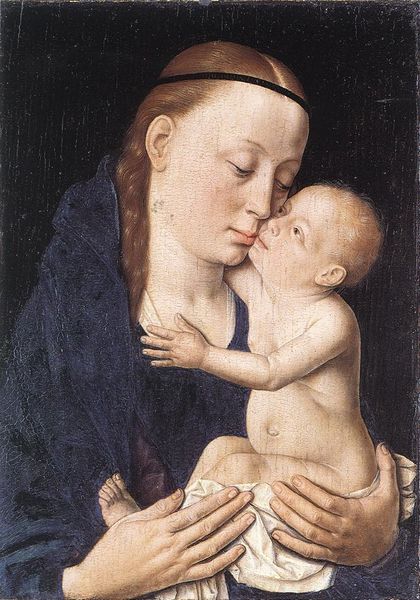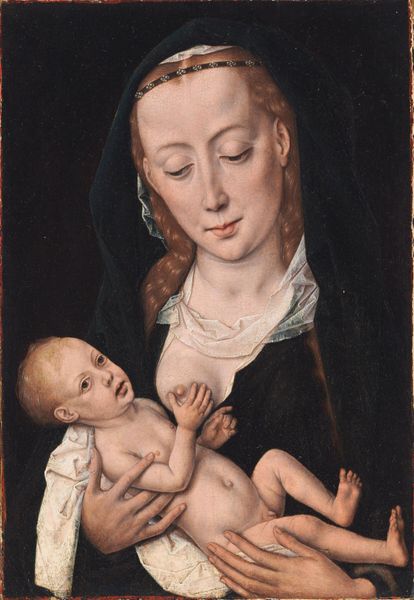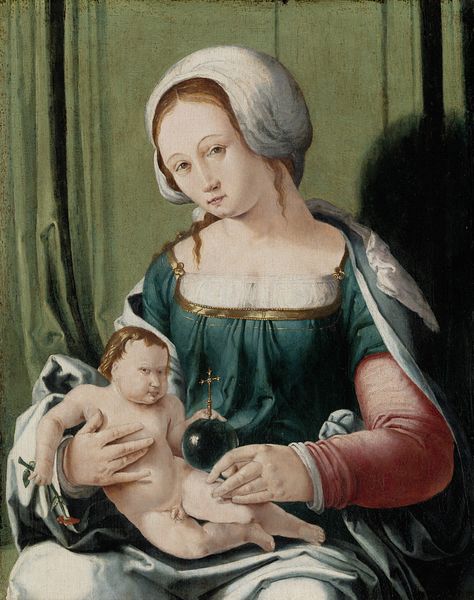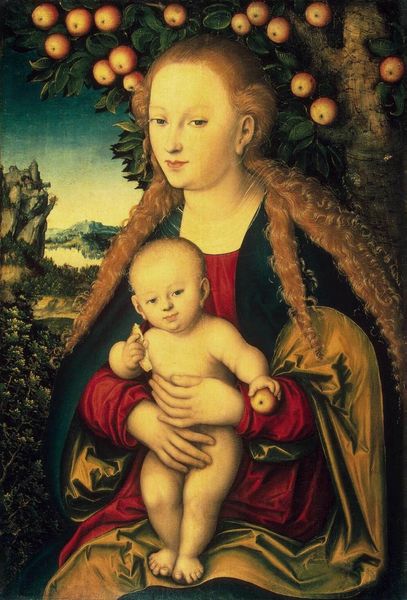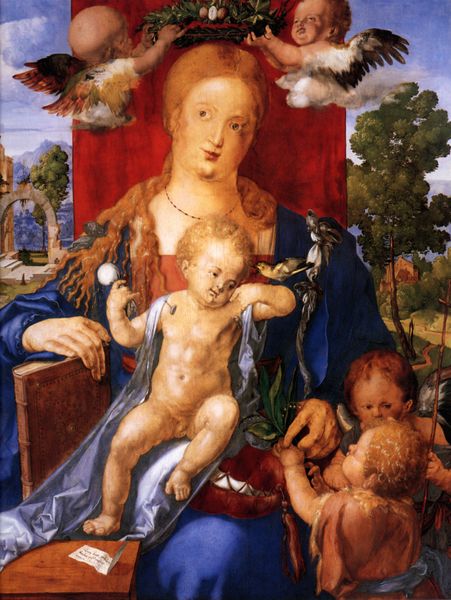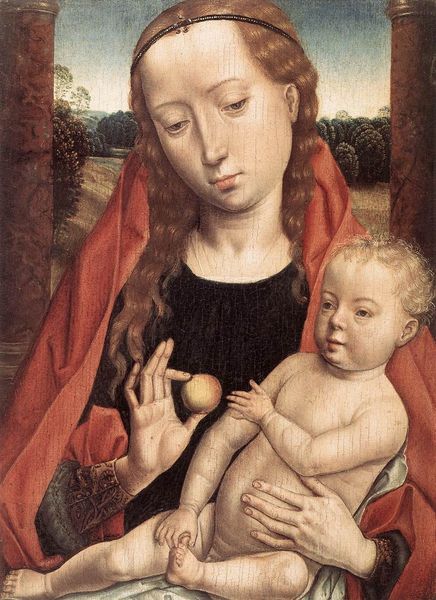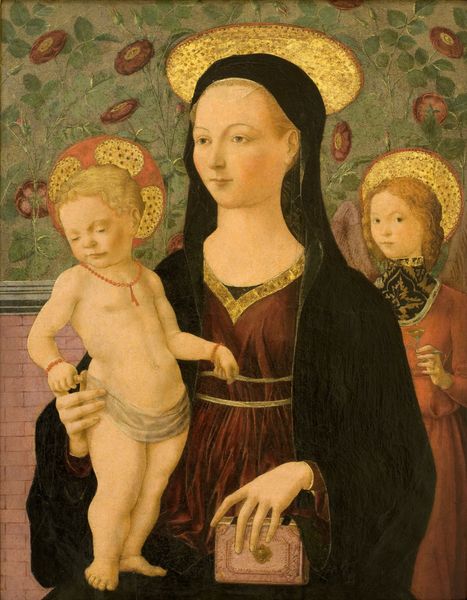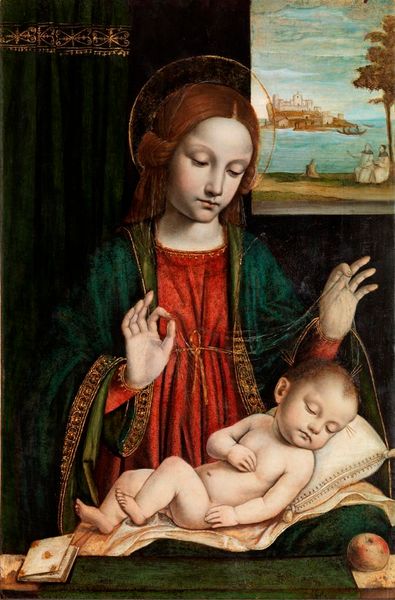
painting, oil-paint
#
portrait
#
high-renaissance
#
allegory
#
painting
#
oil-paint
#
figuration
#
christianity
#
history-painting
#
italian-renaissance
#
christ
Dimensions: 91 x 64 cm
Copyright: Public domain
Editor: We’re looking at “Virgin and Child,” an oil painting from 1540 by Hans Baldung. I’m struck by the contrast between the dark background and the almost luminous skin of the figures, especially how that illumination shapes our reading of them. How do you interpret the relationship between form and meaning in this piece? Curator: Formally, observe how Baldung utilizes a pyramidal composition, echoing High Renaissance conventions. This structure creates stability and emphasizes the central figures. However, note also the subtle disruptions: the ambiguous space, the somewhat flattened perspective. How do these visual choices challenge a purely idealized reading? Editor: I see what you mean. The second child almost seems like an afterthought, compositionally, clinging to the background and holding a handful of fruit, but also in light and volume is presented in stark contrast. Does that relate to how we’re supposed to understand it as a painting of motherhood? Curator: Indeed. Consider how the tactile quality of the paint itself contributes. Baldung employs delicate glazes to render the flesh tones, lending a sense of realism. The fabric, however, is treated with bolder strokes. Does this differentiation enhance the sensory experience or does it offer a framework? Editor: I see what you mean! This painting invites multiple readings, based on how Baldung carefully arranges the different planes, forms, and use of contrasting color. Curator: Precisely! And that interplay between traditional forms and innovative techniques is what makes it truly compelling. It reveals its historical context as well as exceeding it.
Comments
No comments
Be the first to comment and join the conversation on the ultimate creative platform.
